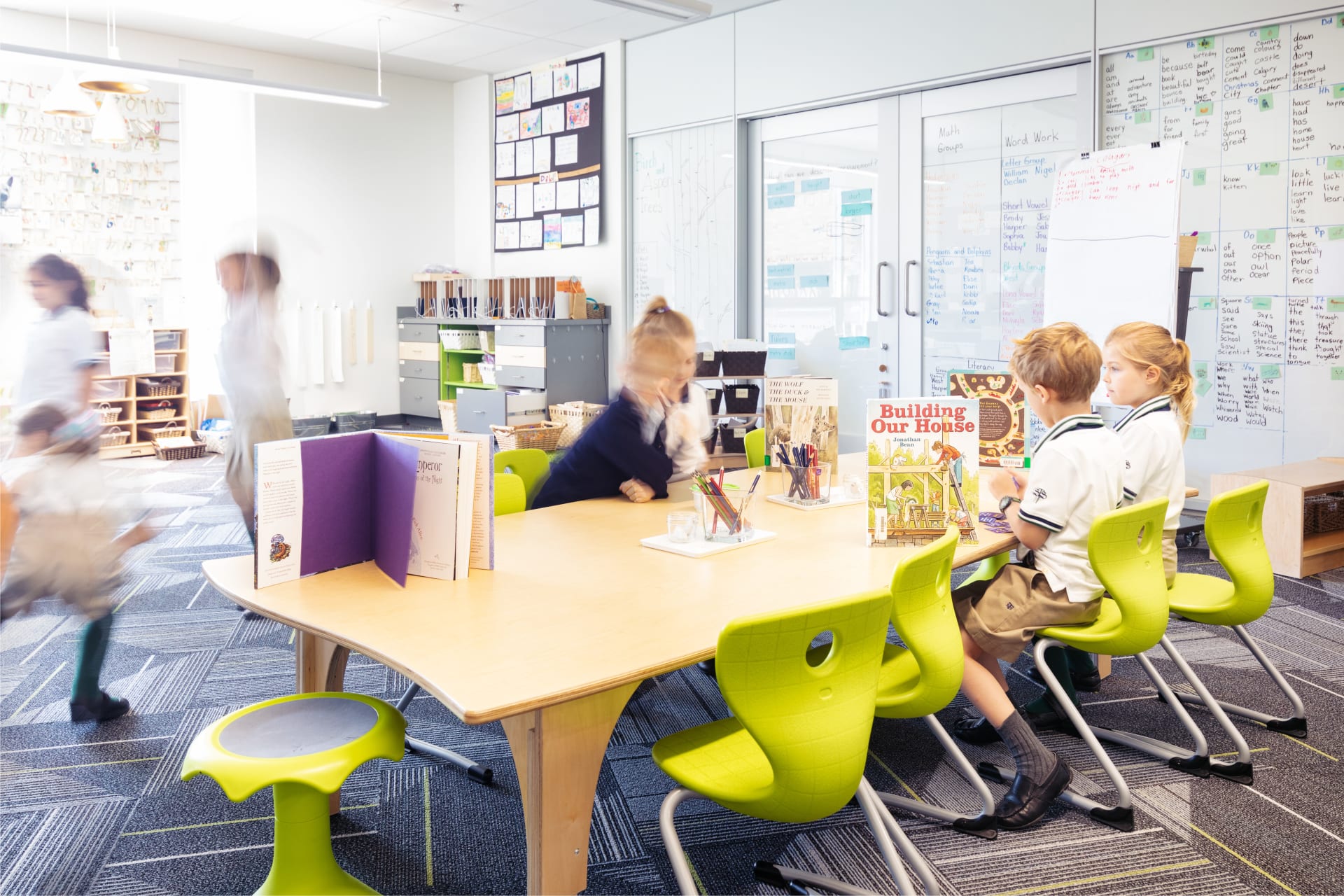A new design guide from HKS sheds (day)light on creating classrooms that support students and teachers.
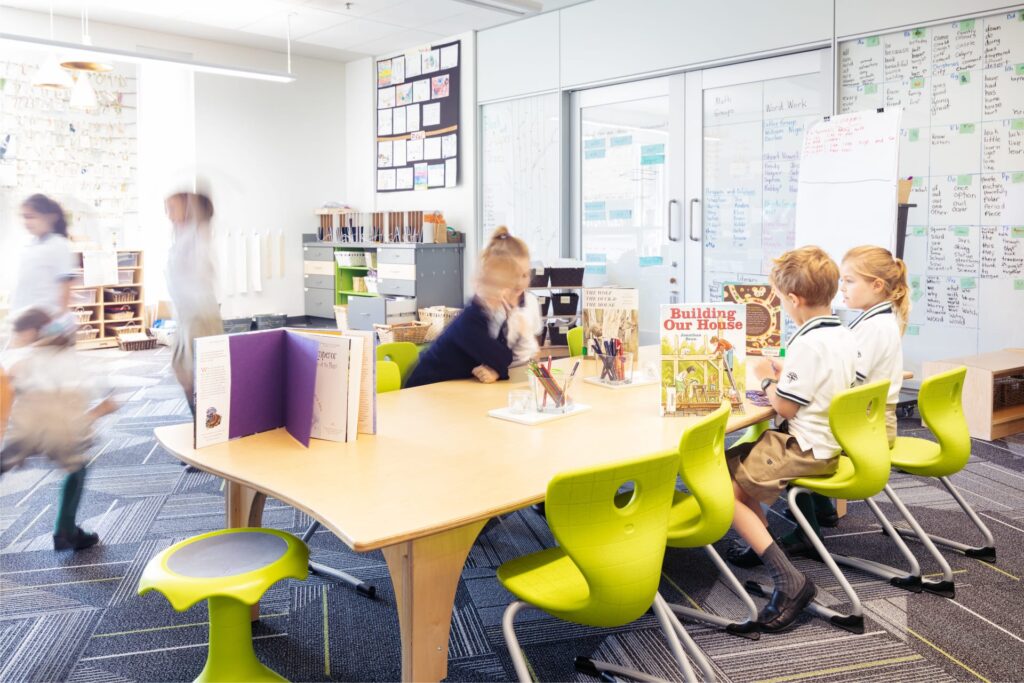
“Mental health in our education systems is an important conversation after the pandemic. Something that was barely a conversation 10 years ago,” says Renae Mantooth PhD. “Especially the mental health of children and young adults.
The senior design researcher at HKS is talking about a design guide she collaborated on for social and emotional learning (SEL). As someone with a self-described passion for evidence-based design, she discovered when it came to creating a built environment to support an SEL approach to education, there wasn’t actually much evidence to help inform design of learning spaces. As part of a funded research study by the American Society of Interior Designers Foundation, she and her colleagues discovered the literature on K12 education spaces pointed to 18 evidence-based strategies. However, the majority of that literature focuses on student outcomes. Little research has been done that directly relates spatial design to teacher outcomes. Not surprisingly, this lack of research often translates to a lack of environmental support for teachers.
What we really found in our research, by engaging with teachers, is that they don’t have the tools needed to properly deliver SEL competencies to their students. That’s part of the reason for this work – why it’s relevant and why it matters.
RENAE MANTOOTH PHD, SENIOR DESIGN RESEARCHER, HKS

Social and emotional learning
Back in the day, education was all about the three Rs. But as learning has evolved, three other letters have grown in importance – SEL. Social and emotional learning supports the wellness of teachers and students and is woven into a curriculum alongside the concepts of math, reading and comprehension. The goal is to improve communication, encourage self-regulation, and build strong relationships. And while this approach seems to focus on the emotional side of the equation, SEL has been shown to have academic benefits as well.
“Bringing SEL strategies into the classroom actually support all of the other goals of math, learning, and literacy. This whole-person approach lets us achieve the other educational competencies as well,” says Mantooth.
The challenge, though, is that there isn’t just one approach. Not every teacher will agree on how to incorporate SEL, and not every school system will have the budget to deploy a formal curriculum. That, combined with the impact COVID-19 had on education in general, makes now a perfect time for Mantooth’s SEL design guide.
“Folks are taking a pause to say, ‘wait, how are our buildings actually influencing the behaviors, programs, and activities that are supposed to be happening here?’” she says. “How are these design decisions actually affecting the teachers and the students that use these spaces every day? That’s really what this work is hoping to answer.”
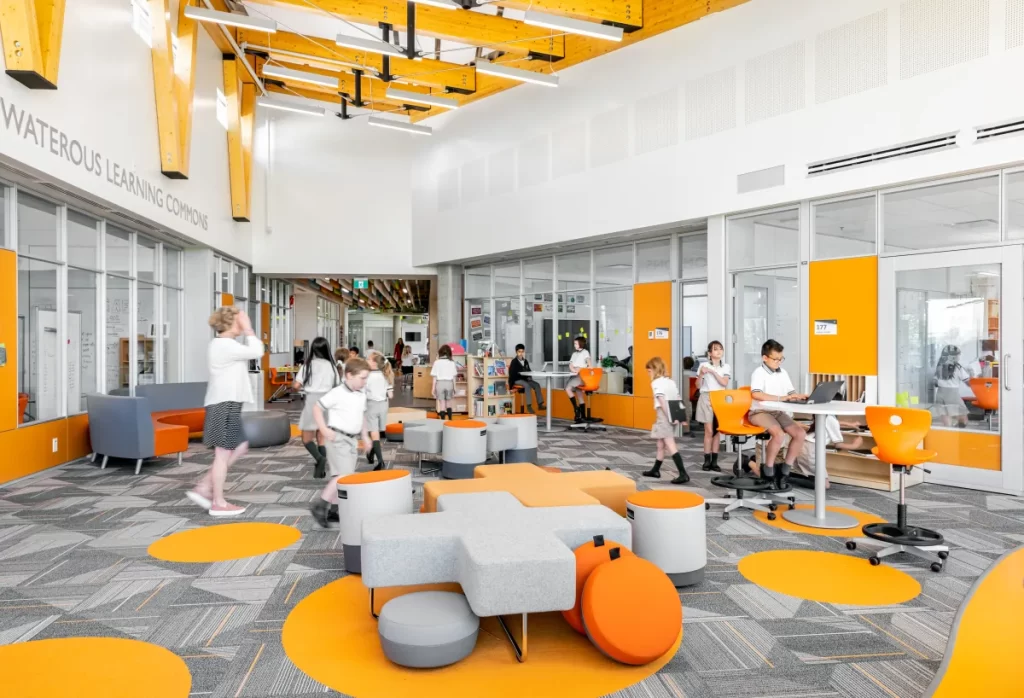
Designing for SEL
The guide explores 18 evidence-based design strategies with a range of outcomes on the social, emotional, and learning aspects of SEL. From the importance of daylight and quality acoustics to the power of visual complexity and flexible spaces, there is a lot to consider.
Mantooth and team outline these following evidence-based design strategies for education spaces:
- 01 Access to Green Spaces
- 02 Accessible Wide Corridors
- 03 Air Quality
- 04 Availability of Technology, Tools, and Supplies
- 05 Cultural Spaces
- 06 Daylighting
- 07 Ergonomic Work Stations
- 08 Legibility + Wayfinding
- 09 Natural Materials and Finishes
- 10 Quality Acoustics
- 11 Quality Artificial Lighting
- 12 Sensory Control
- 13 Sensory Well-Being Hub
- 14 Social and Functional Adjacencies
- 15 Variety of Flexible Furnishings
- 16 Views to Nature
- 17 Visual Complexity
- 18 Welcoming Entry
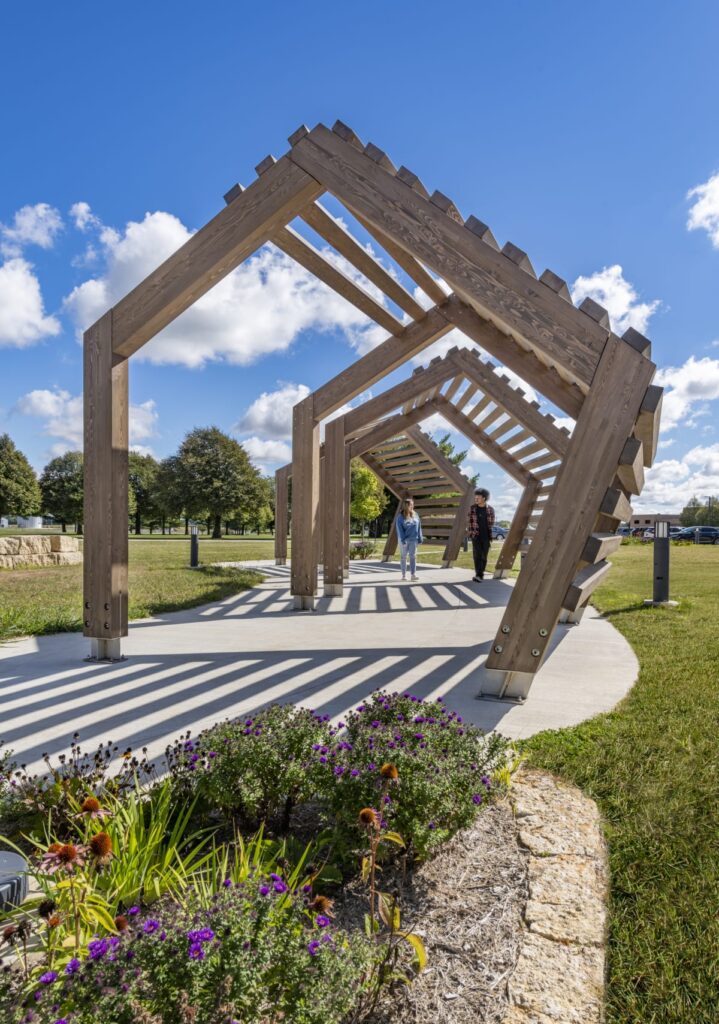
“Maybe you’re not going to be able to achieve every single strategy that’s associated with all of these outcomes,” she says. “But the premise behind the visual design guide is that if the design can stimulate four diverse affordances within one given space, then that might be enough. So rather than incorporating every single card, every single strategy, what can we actually do to make sure that we’re providing those affordances to create enriched learning environments?”
Here are a few high-level examples:
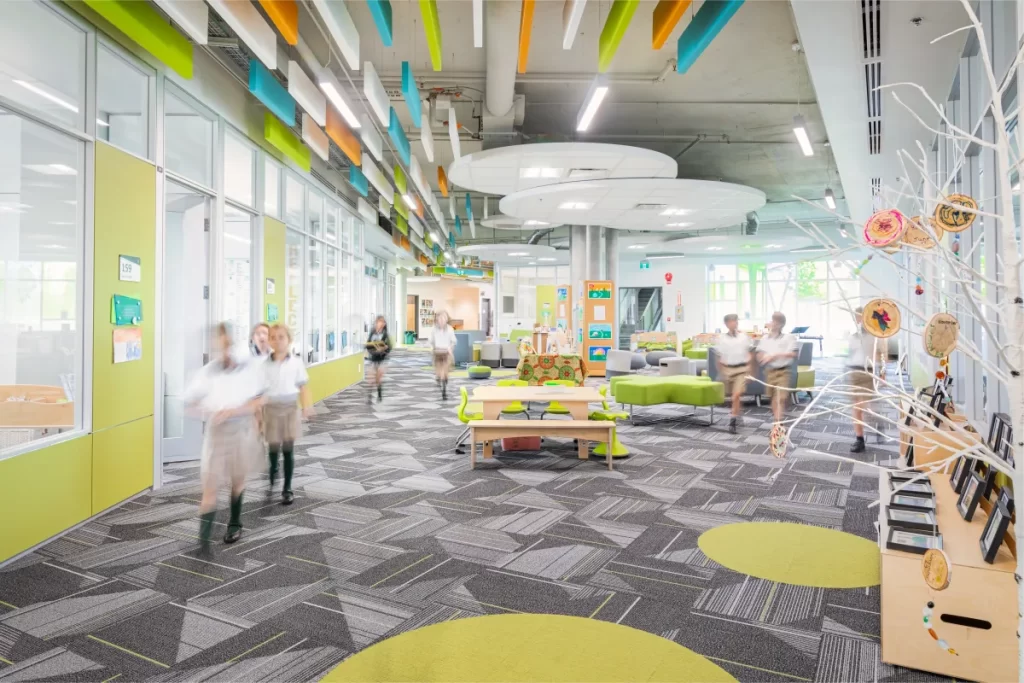
Sensory control
The idea of a one-size-fits-all classroom is a thing of the past. It’s not practical to think what’s going to work for one student or teacher will work for another. Being able to modify the environment to suit the users ensures their focus remains where it needs to. Whether that’s closing off a space with a retractable wall to control acoustics or finding ways to limit visual stimulation, being responsive can make all the difference.
“Understanding flexibility over time is really important,” says Mantooth. “That’s a huge gap because right now teachers are doing the best with what they have and it’s all too common that learning spaces are not designed to accommodate how they’d actually like to use their spaces.”
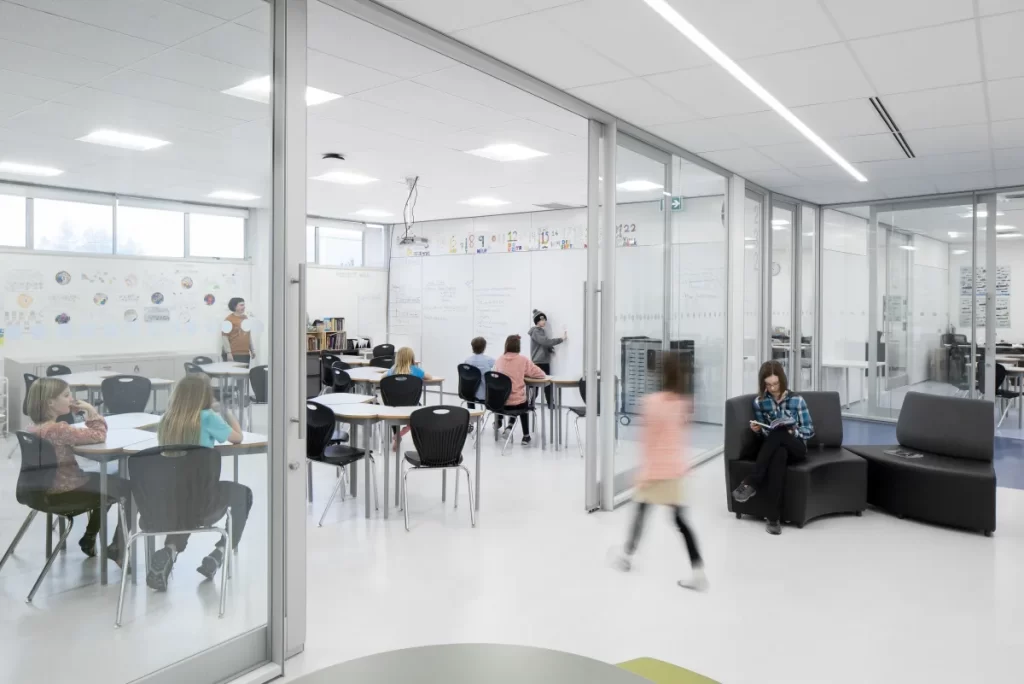
Quality acoustics
“Acoustics in a classroom setting with multiple students talking and engaging is always a problem if not planned for adequately,” says Mantooth. “If teachers are doing heads-down work, like during their planning period, they will use personal devices like earbuds to help drown out the noise. It’s hard to find places for quiet in schools.”
The key is to consider a holistic approach to acoustics. It’s not simply about the walls between two spaces. Sound travels under doors, up in the ceiling, and through all the spaces in between. Deciding early how to manage acoustics is key to creating spaces that successfully handle sound.
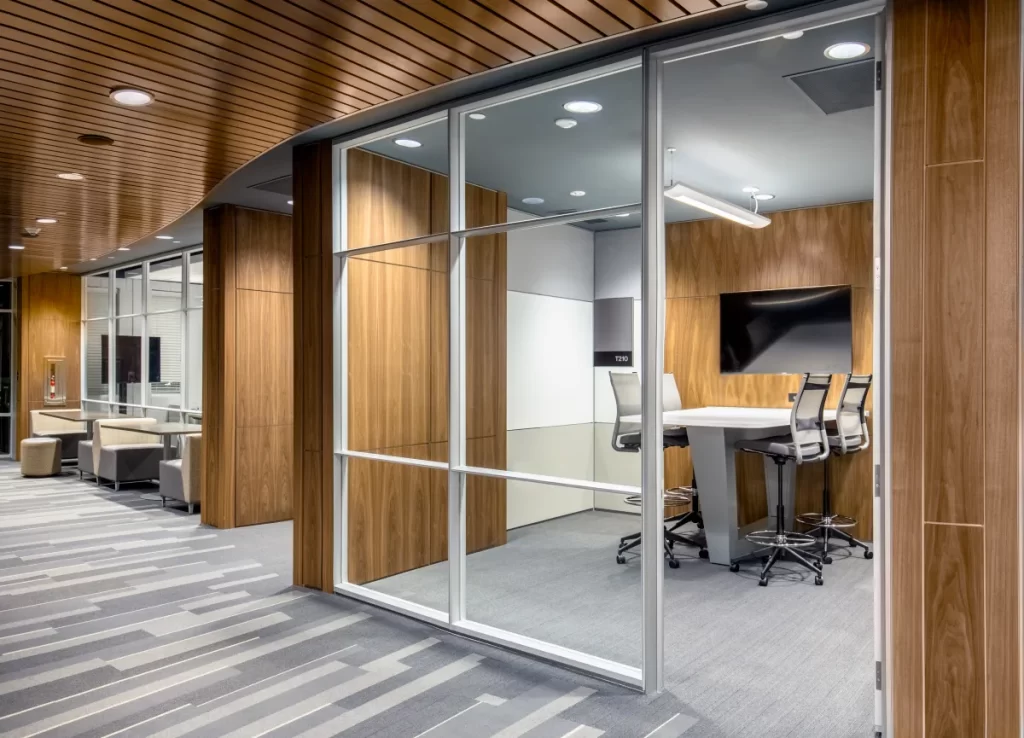
Daylighting
“We know how important light and views of nature are for students,” says Mantooth. “For well-being, for attention restoration, for mental health.”
In addition to the mood-elevating properties of natural light, and the physical benefits of vitamin D, studies have shown a link between natural daylight and improved test scores. Using glass walls that let the sunshine all the way into the core of the building offer a benefit beyond pure aesthetics.
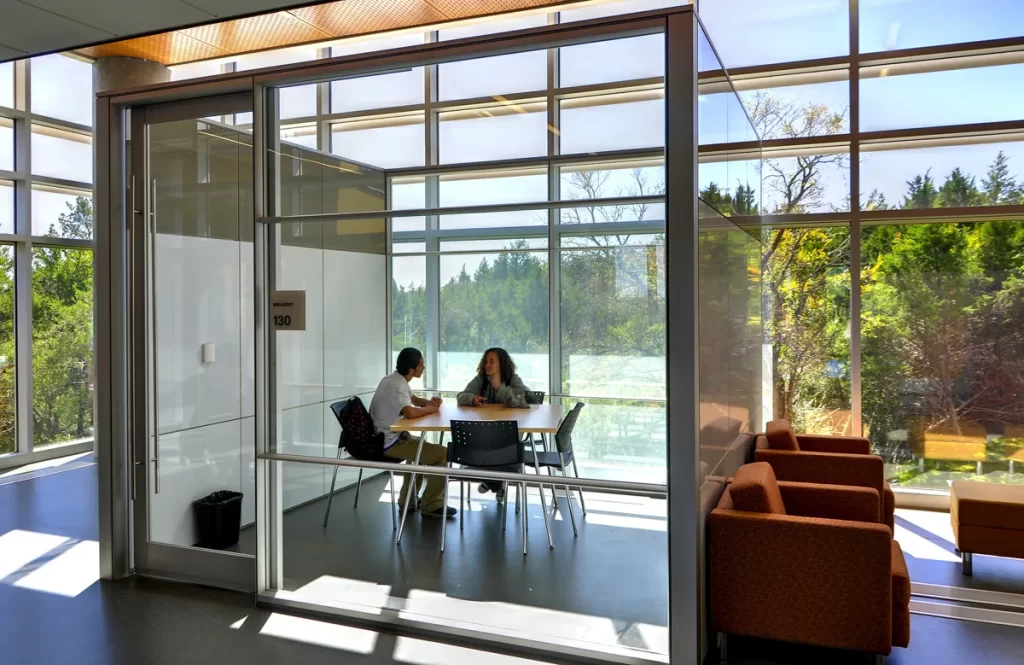
Accessible Wide Corridors
“We call these the spaces in between,” says Mantooth.
Recognizing that every space in a school can be useful and relevant, hallways are no longer just hallways. Finding ways to make them just more than just avenues of circulation, like conversation nooks or climbing walls, brings value to the building and to the students. If they’re wider and designed to be more malleable spaces, those accessible corridors become more useful and more enjoyable.
“It’s about recognizing that learning does happen in the hallway. That social connection happens in the hallway. That respite and restoration happens in the hallway. That those circulation areas are a true programmatic connector for everything within a school building,” she says.
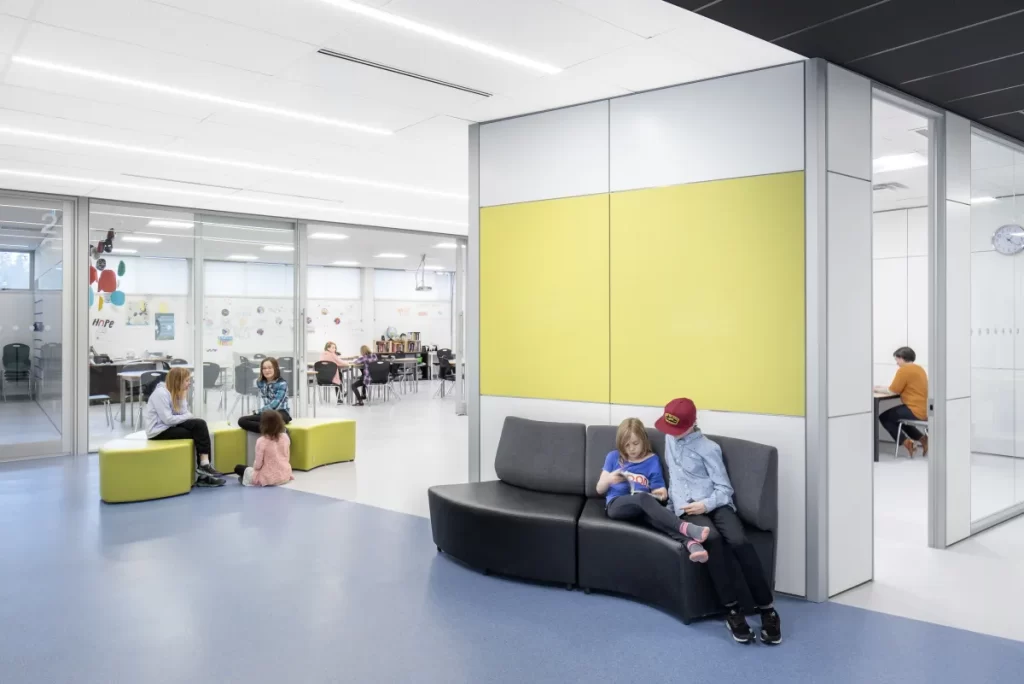
Social and functional adjacencies
Working and learning are two different things, but both are happening in schools simultaneously. Being able to understand how those things can blend together is key to creating a functional K12 space. Mantooth cites this example from their research:
“During their planning period, teachers go down to the coffee shop across the street to grade papers and then they come back to the school to deliver instruction,” she says. “Considering how teachers spend their time doing their jobs, but outside of the school walls was such an interesting realization for us because it’s not typically something that is considered when you think about a teacher’s day to day.”
“How can we start to think about a classroom in terms of a teacher working versus solely in terms of students learning?”
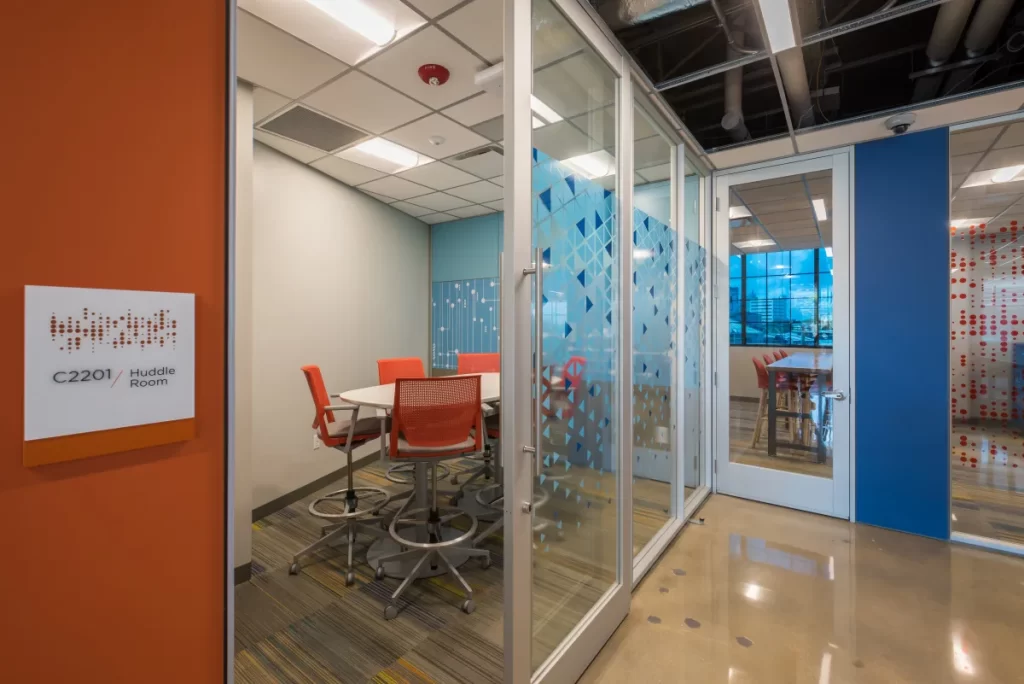
Access to green spaces
“There is some resistance to allocating a budget for this, particularly because of the long-term costs associated, such as maintenance. We have noticed that clients are more and more open to this because of the well-being benefits for students and teachers,” she says.
Whether it’s gardens, courtyards, or play areas, there are a variety of ways to leverage the outdoors as a multi-purpose space. “In K12, we typically see outdoor classrooms, playgrounds, or gardens that often have multiple purposes for educational initiatives and community programming,” says Mantooth.
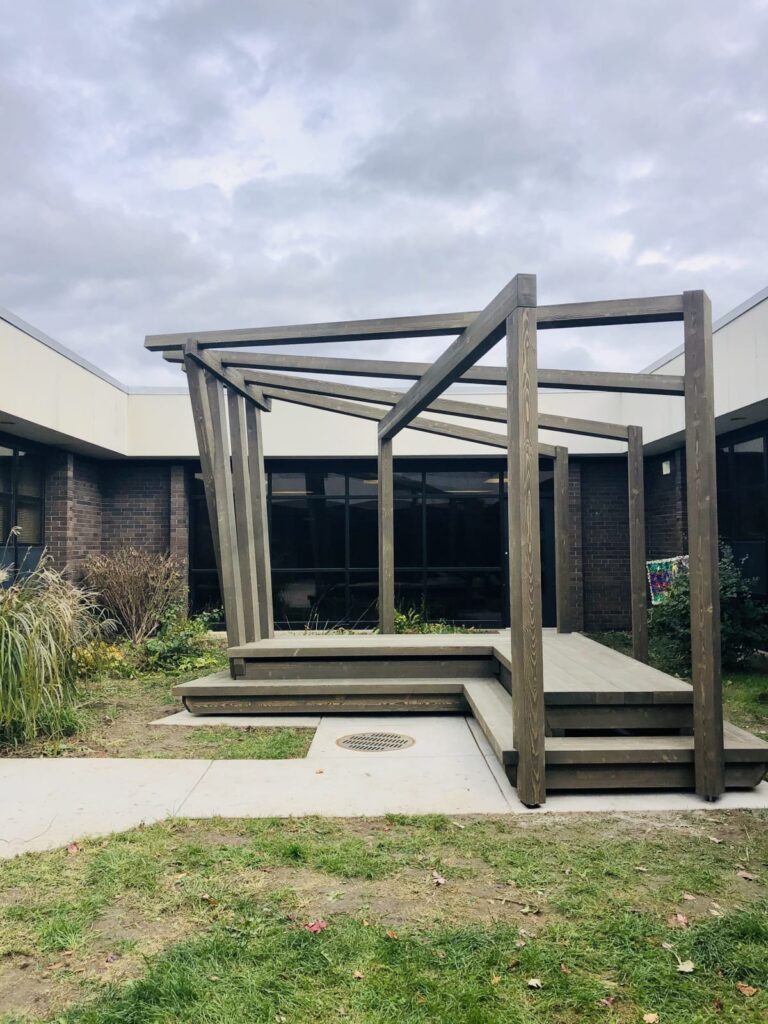
A step in the right direction
Ultimately, with this research, Mantooth and her colleagues are trying to further establish the importance of the built environment in education, particularly with social and emotional learning. The design guide is a tool that demonstrates how the built environment can augment and support SEL strategies.
“Being able to match formal and informal approaches to social emotional learning to the design of the physical environment is the premise of the visual design guide. The built environment alone can’t solve all of the challenges facing schools today, but as designers we can at least help augment and support existing educational initiatives,” she says.
“Ultimately we want our students to be well and SEL is one way to get there.”
